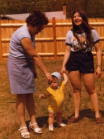Here is information on being the best caregiver you can be
Here is a way for nurses administrators, social workers and other health care professionals to get an easyceu or two
Follow alzheimersideas on twitter
The Dementia Caregiver's Little Book of Hope [Kindle Edition]
Wikipedia
Mister Ed is an American television situation comedy produced by Filmways that first aired in syndication from January 5 to July 2, 1961 and then on CBS from October 1, 1961 to February 6, 1966. A total of 143 episodes were produced, 26 for syndication, and 117 for CBS. It was the first TV show to premiere as a mid-season replacement.
Black Beauty is an 1877 novel by English author Anna Sewell. It was composed in the last years of her life, during which she remained in her house as an invalid.[1] The novel became an immediate bestseller, with Sewell dying just five months after its publication, long enough to see her first and only novel become a success. With fifty million copies sold, Black Beauty is one of the best-selling books of all time.[2] While forthrightly teaching animal welfare, it also teaches how to treat people with kindness, sympathy, and respect. Black Beauty became a forerunner to the pony book genre of children's literature.[3]
Set in Montana about 1900, this was a story about young Ken McLaughlin and his horse Flicka. Ken lived on a ranch with his parents Rob and Nell and the ranch-hand Gus and had many an adventure. Written by J.E. McKillop <jack-mckillop@worldnet.att.net>







